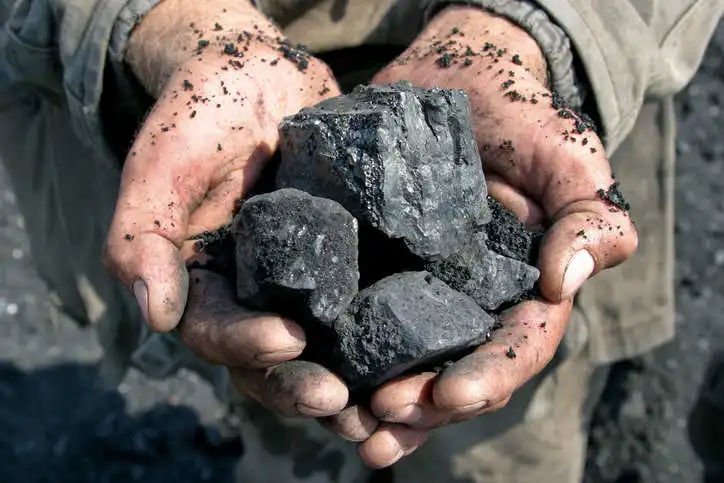Prachi Mishra / New Delhi
India is the second largest producer of coal and the fifth largest in terms of coal deposits in the world. India’s coal profile comprises of domestic production of coal and import from other countries. Although, India has reserves that can last up to one hundred years, coal production is inadequate leading to high dependence and expenditure on import of coal.

Several states, including, Kerala, Punjab, and Maharashtra have reported forced shutdown of their thermal power plants owing to localised shortage of coal. Reportedly, a shortage of coal was also conveyed by Delhi to the Central government. The governments of these states and the Union Territory have issued advisories to severe power outages if the coal shortages are not addressed by the Centre.

Ever since the economy started recovering after the pandemic in 2020, there has been an increase in demand in electricity across the country. A press release by the Government of India stated four reasons for sudden drop in coal production and availability:
- Unprecedented increase in demand for electricity due to revival of economy (from 106.6 Billion Units in 2019 to 124.2 Billion Units in 2021)
- Heavy rains in coal mine areas during September, 2021 thereby adversely affecting the coal production as well as despatch of coal from mines
- Increase in prices of imported coal to unprecedently high level leading to substantial reduction in power generation from imported coal based power plants leading to more dependence on domestic coal. Import price of Indonesian coal jumped from $60 in March 2021 to $160 in September 2021
- Non-building of adequate coal reserves before the onset of Monsoon
The release also stated that coal companies in a few states, namely, Maharashtra, Rajasthan, Tamil Nadu, UP, Rajasthan and Madhya Pradesh, are faced with heavy dues and thus these states could witness coal shortage in the fiscal year 2021-22.
Installed generation capacity
State governments which have reported shutdown of thermal power plants have attributing shortage of coal to power outages in their states. Drawing up from the current power crisis in China, such claims can be misleading for the general public.
As per data from the Ministry of Power, nearly 61% power is sourced from thermal power plants which use fossil fuels as raw materials for power generation. These fossil fuels include coal, gas, diesel, and lignite. Fig.1. shows the share of coal in power generation in India.

Fig.1. Power generation capacity in India. Source: Ministry of Power, India, August 2021.
* Renewable sources are Hydro, Wind, and Solar energy
Coal powered thermal plants account for nearly half of the total installed capacity for power generation in India, followed by new and renewable energy sources. Hence, a shortage of coal, as indicated by few states would not necessarily mean that there will be long, uninterrupted power outages as has been in the case of China. It is important to note here that Fig.1. represents the installed power generation capacity of different resources. The actual utilization of installed capacity varies depending on the availability of raw material and other environmental factors.
Is production or shortage of coal a real threat to power availability?
As per data from the Central Electricity Authority (CEA), the all India actual production and all India target production figures have been shown in Table 1. As of Oct 7th, 2021, the national production of power from thermal sources was met with a six percent deficit[4].
Table 1. Actuals vs Target production of electricity by different sources
| All India | Target (Oct 7th) in MU | Actuals (Oct 7th) in MU | Surplus/Deficit |
| Thermal | 3,222.38 | 3,035.46 | -6% |
| Nuclear | 124.41 | 138.78 | 12% |
| Hydro | 411.55 | 549.5 | 34% |
| Renewable Energy Sources | NA | NA | NA |
To address this deficit of the coal-fired power plants, a meeting was held under the aegis of the Ministry of Coal (comprising of representatives of Ministry of Power, CEA, Power System Operation Corporation, Ministry of Railways, and Coal India Limited) on Oct 9th, 2021, which affirmed that 2 –
- Dispatch of coal from Coal India should touch 1.05 metric tonnes to meet the demand
- Beginning Oct 10th, 2021, 1.6 MT of coal will be dispatched per day till Oct 12th, 2021. Thereafter, 1.7 MT of coal will be dispatched daily
- The officials are cognizant of the fact that such consistent supply will not just meet the immediate demands but also help build a stockpile
- The Ministry of Railways has been authorized to keep a close vigil on logistics and end-to-end delivery of coal to the thermal power plants
The global impact of increased coal prices and disrupted supply chains have led to coal shortages in many nations. However, attributing coal shortages to long power outages can be detrimental to economic growth of the country, industrial production, and recovery post-pandemic. India’s new and renewable energy sources have picked up massively in the last few years and it would be in best interest of states and the central government to mull over reducing coal dependency for power generation.
(Prachi is a research consultant at Center for Integrated and Holistic Studies. Views expressed are author’s own.)



